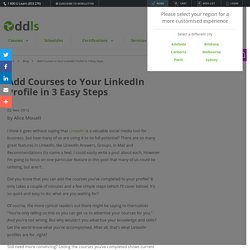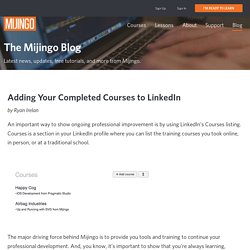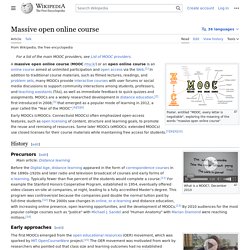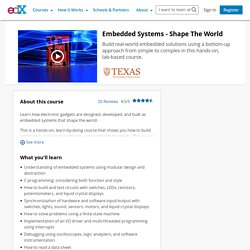

What's the difference between Artificial Intelligence, Machine Learning and Deep Learning? Artificial intelligence has held a place in our imagination from the beginning of the XX century.

Already in the 1930s and 1940s, the pioneers of computing such as Alan Turing began formulating the basic techniques like neural networks that make today’s AI possible. Today, AI is already all around us. Google uses Machine Learning to filter out spam messages from Gmail. Facebook trained computers to identify specific human faces nearly as accurately as humans do. Deep Learning is used by Netflix and Amazon to decide what you want to watch or buy next. Ok. Artificial Intelligence is the broad umbrella term for attempting to make computers think the way humans think, be able to simulate the kinds of things that humans do and ultimately to solve problems in a better and faster way than we do.
Researchers tried many different approaches to creating AI, but today the only area that brings promising and relevant results is called Machine Learning. Related. Engineering Books.
Programming Stuff. 17 χρήσιμες ιστοσελίδες που μπορούν να μας κάνουν να σκεφτόμαστε λιγάκι πιο έξυπνα! Θέλεις να είναι πιο παραγωγική η επόμενη φορά που θα μπεις στο internet; Έχετε κουραστεί να χάνετε το χρόνο σας βλέποντας αστεία βίντεο για γάτες και σκύλους ή κάνοντας σκρολ το Facebook newsfeed σας; Θέλετε να είναι πιο παραγωγική η επόμενη φορά που θα μπείτε στο internet; Παρακάτω θα βρείτε μια λίστα δικτυακών τόπων που μπορούν να σας κάνουν λίγο πιο έξυπνους: Digital Photography School – Ένα χρυσωρυχείο με άρθρα που μπορούν να βελτιώσουν τις φωτογραφικές σας ικανότητες ακόμα και αν είστε εντελώς αρχάριοι. Υπάρχει επίσης ένα ενεργό φόρουμ στο οποίο μπορείτε να συνδεθείτε με άλλους φωτογράφους. Duolingo – Ακονίστε τις γλωσσικές δεξιότητές σας με αυτό το διασκεδαστικό, σχεδόν εθιστικό παιχνίδι. Factsie – Γνωρίζετε ότι η κερασφόρος σαύρα μπορεί να εκτοξεύσει αίμα από τα μάτια της; Κάντε κλικ σε αυτό το site για να βρείτε ασυνήθιστα ιστορικά και επιστημονικά δεδομένα, μαζί με τις πηγές.
FreeRice – Αναπτύξτε το λεξιλόγιό σας, ενώ θα συμβάλλετε στην σίτιση πεινασμένων ανθρώπων. Udacity - Free Online Classes & Nanodegrees. Degreed. Δωρεάν & Επιδοτούμενα Σεμινάρια, Κατάρτιση, Εργασία, ΟΑΕΔ - DoreanSeminaria.gr. Semifind.gr - Σεμινάρια, Προπτυχιακά, Μεταπτυχιακά, ΙΕΚ. All you need to master Dev, IT and Creative Design skills. Microsoft-Technology-Associate-MTA-certification. LinkedIn Tutorials. How to add training courses to your LinkedIn profile. Improve your LinkedIn profile with Pluralsight courses. Here’s an idea I’ve seen from some Pluralsight subscribers: List the courses you’ve taken directly on your LinkedIn profile.

In this post we'll focus on the best way to do this, but you can also apply the idea to other personal marketing mediums including your resume, cover letter, website, about.me page, github and Stack Overflow profiles. First, you might be asking why you'd want to do this. You may be worried that it seems pompous, or like information overload. But I’ve learned that if we don’t tell people who we are, and how they should see us, then they take whatever information they can find and perceive who we are based on that. This perception becomes our personal brand. Make Udacity Courses Stand Out with LinkedIn. As a part of career support for our Nanodegree cohorts, Francois (our Head of Marketing) and Jason (our Technical Recruiter) hosted an on-air talk for our Front-End Nanodegree students called “Stand out with LinkedIn.”

For anyone who doesn’t know, LinkedIn is a very valuable resource for job seekers and can be an incredibly effective tool for all professionals and students. Here are some pointers from the talk to help get you started with documenting your own professional journey. How Recruiters Look at LinkedIn Jason says that recruiters usually follow a “3-30-180” rule when looking at a LinkedIn profile. Add Courses to Your LinkedIn Profile in 3 Easy Steps. I think it goes without saying that LinkedIn is a valuable social media tool for business, but how many of us are using it to its full potential?

There are so many great features in LinkedIn, like LinkedIn Answers, Groups, In Mail and Recommendations (to name a few). I could easily write a post about each. However I’m going to focus on one particular feature in this post that many of us could be utilising, but aren’t. Did you know that you can add the courses you’ve completed to your profile? It only takes a couple of minutes and a few simple steps (which I’ll cover below). Adding Your Completed Courses to LinkedIn - Mijingo. By Ryan Irelan An important way to show ongoing professional improvement is by using LinkedIn’s Courses listing.

Courses is a section in your LinkedIn profile where you can list the training courses you took online, in person, or at a traditional school. The major driving force behind Mijingo is to provide you tools and training to continue your professional development. Massive open online course. Poster, entitled "MOOC, every letter is negotiable", exploring the meaning of the words "Massive Open Online Course" A massive open online course (MOOC /muːk/) is an online course aimed at unlimited participation and open access via the web.[1] In addition to traditional course materials such as filmed lectures, readings, and problem sets, many MOOCs provide interactive user forums to support community interactions among students, professors, and teaching assistants (TAs).

MOOCs are a recent and widely researched development in distance education which were first introduced in 2006 and emerged as a popular mode of learning in 2012.[2][3] Early MOOCs often emphasized open-access features, such as open licensing of content, structure and learning goals, to promote the reuse and remixing of resources. Some later MOOCs use closed licenses for their course materials while maintaining free access for students.[4][5][6][7] History[edit] What is a MOOC? Precursors[edit] Early approaches[edit] Embedded Systems Course. Learn how electronic gadgets are designed, developed, and built as embedded systems that shape the world.

This is a hands-on, learn-by-doing course that shows you how to build solutions to real-world problems using embedded systems. The course uses a bottom-up approach to problem solving, building gradually from simple interfacing of switches and LEDs to complex concepts like display drivers, digital to analog conversion, generation of sound, analog to digital conversion, graphics, interrupts, and communication. We will present both general principles and practical tips for building circuits and programming the microcontroller in the C programming language. Syncfusion. Δωρεάν διαδικτυακά μαθήματα για όλους μέσω OpenΕdx από τις Πανεπιστημιακές Εκδόσεις Κρήτης του ITE – Ελεύθερο Λογισμικό στην Εκπαίδευση. 15 websites that make you smarter. Δεκατρία sites για οnline μάθηση.